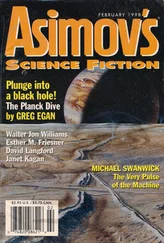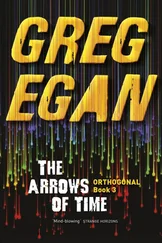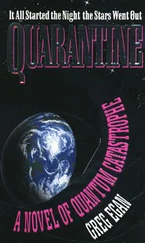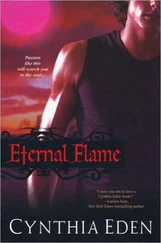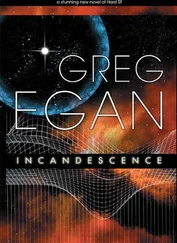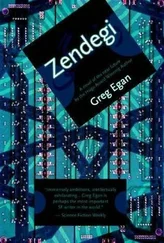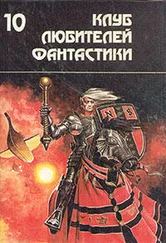Greg Egan - The Eternal Flame
Здесь есть возможность читать онлайн «Greg Egan - The Eternal Flame» весь текст электронной книги совершенно бесплатно (целиком полную версию без сокращений). В некоторых случаях можно слушать аудио, скачать через торрент в формате fb2 и присутствует краткое содержание. Жанр: Фантастика и фэнтези, на английском языке. Описание произведения, (предисловие) а так же отзывы посетителей доступны на портале библиотеки ЛибКат.
- Название:The Eternal Flame
- Автор:
- Жанр:
- Год:неизвестен
- ISBN:нет данных
- Рейтинг книги:4 / 5. Голосов: 1
-
Избранное:Добавить в избранное
- Отзывы:
-
Ваша оценка:
- 80
- 1
- 2
- 3
- 4
- 5
The Eternal Flame: краткое содержание, описание и аннотация
Предлагаем к чтению аннотацию, описание, краткое содержание или предисловие (зависит от того, что написал сам автор книги «The Eternal Flame»). Если вы не нашли необходимую информацию о книге — напишите в комментариях, мы постараемся отыскать её.
The Eternal Flame — читать онлайн бесплатно полную книгу (весь текст) целиком
Ниже представлен текст книги, разбитый по страницам. Система сохранения места последней прочитанной страницы, позволяет с удобством читать онлайн бесплатно книгу «The Eternal Flame», без необходимости каждый раз заново искать на чём Вы остановились. Поставьте закладку, и сможете в любой момент перейти на страницу, на которой закончили чтение.
Интервал:
Закладка:
Patrizia flinched. Carla hadn’t realized how sarcastic her tone had become. “I’m sorry,” she said. “I didn’t mean to be dismissive. I’m just confused. I don’t know how to make sense of this.”
Patrizia looked up and met her gaze; they both knew exactly what was making the conversation so difficult. She said, “I’ve been trying to think how we could explain the tarnishing experiment, making use of this result. Suppose there’s some reason why light waves have to be accompanied by these particles—let’s call them ‘luxites’, just to give them a name.”
Carla managed to stifle a derisive buzz. “Luxite” was the term that had been used by disciples of the ninth-age philosopher Meconio, the man who had first proposed—without a trace of evidence—that light was composed of “luminous corpuscles”. Giorgio had buried that notion with his double-slit experiment, and Nereo and Yalda had built a whole mountain of wave theory on top of the grave. Patrizia wasn’t to blame for Meconio’s failings, but the name carried too much baggage.
“Let’s call them ‘photons’,” Carla suggested. “Different root, same meaning.”
“If the light-makers are called luxagens, shouldn’t the particles that accompany light share the same root?”
“People might confuse the two,” Carla said. “This will be clearer, trust me.”
Patrizia nodded, indifferent. “The rule is, the photon moves at the speed of the light pulse,” she continued. “But for that to be true, to create light of a certain frequency means creating photons with a certain energy . So if a process generates a particular frequency of light, that imposes a peculiar constraint on the amount of energy involved: you can create one photon, or two, or three… but your choices are confined to whole numbers. You don’t get to make half a photon.”
“Wait!” Carla interjected. “What about the energy in the light wave itself? How is that connected to the energy of these particles?”
Patrizia gave an apologetic hum. “I’m not sure. For now, can we just say that it’s very small? That most of the energy in the light actually belongs to the photons?”
“It’s your theory,” Carla said. “Go ahead.”
Patrizia shifted anxiously on the guide rope. “Suppose the energy valleys for the luxagens in mirrorstone all have a certain depth. The luxagens would have a bit of thermal energy as well, raising them off the floor of the valley, but if that doesn’t vary too much there’ll still be a particular amount of energy that a luxagen would need to gain in order to climb out of the valley and into the void—leaving behind a tarnished surface.”
“That’s a reasonable starting point,” Carla agreed. Nereo’s theory implied that the luxagens should have climbed out of the valley on their own, eons ago—as their thermal vibrations generated light and ever more kinetic energy—but since nobody else had managed to solve the stability problem it would hardly be fair to expect Patrizia to deal with it.
“When you hit the mirrorstone with light of a single frequency,” Patrizia said, “the luxagens vibrate in time with the light, and create light of their own. But creating light means creating photons. Suppose a luxagen creates one photon; that will give it a certain amount of kinetic energy, but it might not be enough to get it out of the valley. Two might not be enough either, or three, but suppose four is sufficient. So once it’s made four photons, the luxagen escapes, the mirrorstone gets tarnished.”
Carla was following her now. “But if the light striking the mirrorstone has a lower frequency, that corresponds to a smaller energy for each photon, and there’ll come a point where it suddenly takes five to do the job. So that’s the first transition point we see in the tarnishing pattern: on one side four photons bridge the energy gap, on the other side you need five.”
Patrizia said, “Yes. All the nonsense I came up with before about the luxagens in the valleys being struck by different numbers of ‘wandering luxagens’ pushed around by the light… that’s all gone! The four and the five in the frequency ratio are just the numbers of photons that have to be created by the luxagens in order to escape from the valley.”
A stint ago, Carla would have called this new version twice as nonsensical as the first. If you could ping a rope as hard or as gently as you liked, making waves in it as strong or as weak as you liked, why should waves in the light field be so different, burdened with these strange restrictions and appurtenances? But if you were willing to treat the frequency of light as a surrogate for the energy of a particle moving at the same speed, Patrizia’s plot through the scattering data brought this hypothetical “photon” to life, showing it behaving in precisely the manner you’d expect when one particle collided with another.
Carla said, “Before we begin praising the genius of Meconio, can you think of any way we can test this idea?”
“I haven’t been able to come up with any wholly new experiment,” Patrizia admitted. “But there’s something in the original experiment that we haven’t measured yet.”
“Go on.”
“The time it takes for each part of the tarnishing pattern to appear.”
Carla could see the merit in looking at that more closely. “If it takes a certain amount of time to create each photon, then the extra time required for successive tiers to reach a given tarnishing density should be the same. We’d need to push it to a longer exposure, though, and get another tier at frequencies so low that it takes six photons to leave a mark.”
Patrizia said, “It might not take the same time to produce a photon at different frequencies. What if the light that’s driving the process has to go through a certain number of cycles?”
“Like… cranking the handle on those mechanical loaf-makers? It’s the number of turns, not the time you spend turning.” Carla had no idea what was required to crank out a photon, so there was no obvious way to decide between the two criteria. “The period of violet light is only one and a half times that of red light; we can make a long enough exposure to test both possibilities, and see if either of them fits the results.”
Patrizia emitted a chirp of delight. “So we’re really going to test this theory?”
“Of course,” Carla replied. “Isn’t that what we’re here for?”
When Patrizia had left, Carla took the groundnuts from the cupboard and went through her ritual. As she savored the odor, she realized that she’d rushed through the discussion too quickly, leaving too many problems unchallenged.
How could a luxagen “know” how long it had been exposed to light? Whether it was meant to be counting cycles of the light or simply recording the passage of time, what physical quantity could play the role of timer? Not the luxagen’s energy, or the jumps in the tarnishing pattern would have been smoothed away. The success of Patrizia’s theory relied on the axiom that you couldn’t make half a photon, but unless something was keeping track of the process—if it could not, in some sense, be half done —then why should it take any particular amount of time to create one of these particles?
The scattering curves were beautiful. The link between energy and frequency was beautiful. But the whole theory still made no sense.
Carla put the groundnuts away, wondering how she was going to persuade Assunto—who doubted the existence of particles of matter—to give her six times as much sunstone as before so she could now go hunting for particles of light.
13
Silvano had an announcement for his friends. “I’ve decided to run for the Council.”
Читать дальшеИнтервал:
Закладка:
Похожие книги на «The Eternal Flame»
Представляем Вашему вниманию похожие книги на «The Eternal Flame» списком для выбора. Мы отобрали схожую по названию и смыслу литературу в надежде предоставить читателям больше вариантов отыскать новые, интересные, ещё непрочитанные произведения.
Обсуждение, отзывы о книге «The Eternal Flame» и просто собственные мнения читателей. Оставьте ваши комментарии, напишите, что Вы думаете о произведении, его смысле или главных героях. Укажите что конкретно понравилось, а что нет, и почему Вы так считаете.

